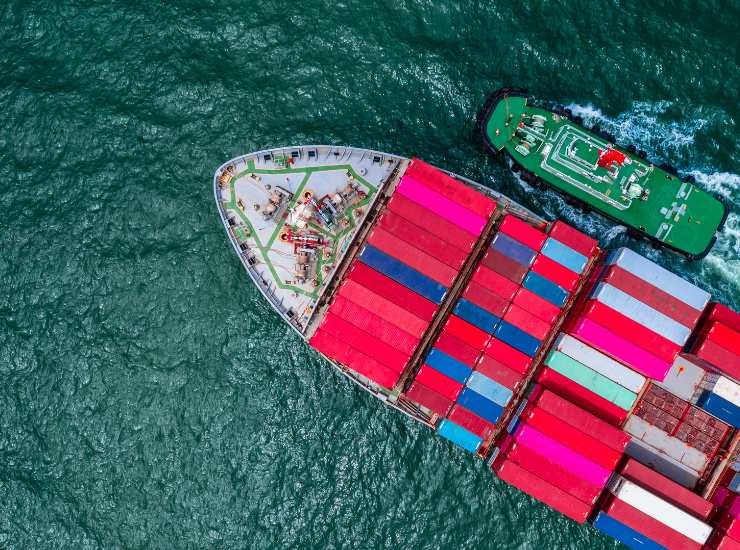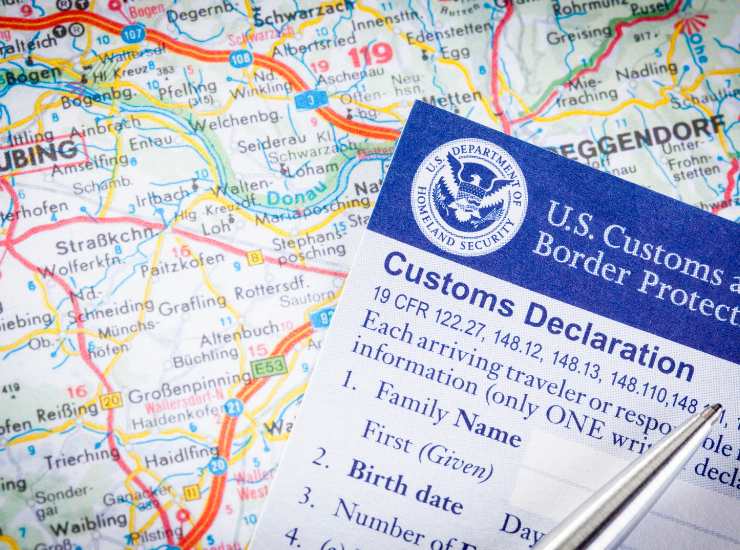Master HS codes for Sri Lankan imports. Learn classification, structure, duty rates & common mistakes. Expert guide from G.A. Enterprises to save costs & avoid delays.
Introduction
Every product crossing international borders must be classified under a unique code—the Harmonized System (HS) code. For importers in Sri Lanka, understanding HS codes isn’t just a bureaucratic requirement; it’s a critical skill that directly impacts your customs duties, clearance speed, and overall import costs.
A single-digit error in your HS code classification can result in paying excessive duties, facing customs penalties, or experiencing frustrating shipment delays. Conversely, accurate HS code classification ensures smooth customs clearance in Sri Lanka, optimal duty rates, and compliance with import regulations.
This comprehensive guide demystifies HS codes for Sri Lankan importers. Whether you’re importing electronics, textiles, machinery, or consumer goods, you’ll learn how to classify products correctly, understand the code structure, calculate duties accurately, and avoid costly classification mistakes that plague many businesses.
What is an HS Code?
The Harmonized System (HS) code is an internationally standardized system of names and numbers used to classify traded products. Developed and maintained by the World Customs Organization (WCO), this system is used by over 200 countries worldwide, including Sri Lanka.

HS codes serve multiple critical functions in international trade. They determine the customs duty rate applicable to your products, identify whether items require import licenses or special permits, help customs authorities assess risk and decide on inspections, enable governments to collect trade statistics, and facilitate communication between traders, customs, and logistics providers globally.
In Sri Lanka, HS codes are administered by Sri Lanka Customs and form the foundation of the customs tariff system. Every import declaration (CUSDEC) must include the correct HS code for each product being imported.
The universal nature of HS codes means that a smartphone classified under a specific HS code in China will have the same base code when imported to Sri Lanka, though additional digits may be added for national-level classification.
Structure of HS Codes: Breaking Down the Numbers
Understanding the structure of HS codes helps you classify products more accurately and communicate effectively with suppliers and customs agents.
The International Standard: 6-Digit HS Code
The core HS code consists of six digits, organized hierarchically from general to specific categories. The first two digits represent the Chapter (product category), digits three and four represent the Heading (product group), and digits five and six represent the Subheading (specific product type).
For example, HS Code 8517.62 breaks down as follows: 85 = Chapter – Electrical machinery and equipment, 8517 = Heading – Telephone sets and apparatus for transmission, 8517.62 = Subheading – Machines for the reception, conversion, and transmission of voice or data.
Sri Lanka’s National Classification: 8 to 10 Digits
While the international standard uses six digits, Sri Lanka Customs extends this to 8 or sometimes 10 digits for more detailed national classification. These additional digits allow for more specific duty rates, special provisions under trade agreements, and detailed trade statistics collection.
For example, 8517.62.00 includes two additional national digits for precise classification within Sri Lankan tariff schedules, while 8517.62.00.10 may include further subdivision for specific product variations.
When importing to Sri Lanka, you’ll need to use the full national tariff code as specified in the Sri Lanka Customs Tariff, not just the 6-digit international code.
How to Find the Correct HS Code for Your Products
Accurate HS code classification requires a systematic approach. Here’s how to find the right code for your imports:
Step 1: Understand Your Product Completely
Before searching for an HS code, gather complete product information, including the exact product name and description, materials and components it’s made from, primary function and intended use, technical specifications (voltage, capacity, dimensions), and manufacturing process if relevant.
The more detailed your product knowledge, the more accurate your classification will be.
Step 2: Use the Sri Lanka Customs Tariff Guide
The official Sri Lanka Customs Tariff is your primary reference tool. It’s organized by chapters covering different product categories. Start by identifying which chapter your product falls under, then narrow down to the appropriate heading, and finally select the specific subheading.
The tariff guide includes section notes, chapter notes, and subheading notes that provide classification rules and exclusions. Always read these notes carefully as they contain critical guidance.
Step 3: Consider the General Rules of Interpretation (GRI)
The Harmonized System includes six General Rules of Interpretation that govern how products should be classified, especially for complex or multi-component items. These rules are international standards that customs authorities worldwide follow.
Key principles include classifying goods by their most specific description rather than general terms, classifying mixtures and composite goods by their essential character, and classifying goods that could fit multiple headings under the heading that appears last numerically.
Step 4: Consult with Experts
When in doubt, seek professional guidance. Experienced customs agents like G.A. Enterprises have extensive knowledge of HS code classification and can prevent costly errors. Sri Lanka Customs also offers advance rulings on classification for complex products.
Need help finding the correct HS code for your products? Contact our classification experts for accurate guidance.
HS Codes and Customs Duty Calculation in Sri Lanka
Your HS code directly determines how much you’ll pay in customs duties and taxes. Understanding this relationship helps you budget accurately and identify potential cost savings.
How Duty Rates Are Assigned
Each HS code in the Sri Lanka Customs Tariff has an assigned duty rate. Rates vary dramatically based on product type, ranging from 0% for essential goods and raw materials to 15-30% for manufactured consumer goods, and exceeding 100% for luxury items and protected domestic industries.
Additionally, preferential rates may apply under trade agreements like the South Asian Free Trade Area (SAFTA), Asia-Pacific Trade Agreement (APTA), and bilateral agreements with countries like India, Pakistan, and Singapore.
Complete Tax Calculation Example
Let’s calculate the total import cost for a product to illustrate how HS codes affect your bottom line:
Product: Laptop computers (HS Code: 8471.30.00)
CIF Value: $1,000
Customs Duty Rate: 0% (under current Sri Lankan rates for computers)
VAT: 15%
PAL (Ports and Airports Development Levy): 7.5%
Calculation:
- CIF Value: $1,000
- Customs Duty: $1,000 × 0% = $0
- Subtotal: $1,000 + $0 = $1,000
- VAT: $1,000 × 15% = $150
- PAL: $1,000 × 7.5% = $75
- Total Import Cost: $1,225
Now compare with a different product category:
Product: Leather handbags (HS Code: 4202.21.00)
CIF Value: $1,000
Customs Duty Rate: 30%
VAT: 15%
PAL: 7.5%
Calculation:
- CIF Value: $1,000
- Customs Duty: $1,000 × 30% = $300
- Subtotal: $1,000 + $300 = $1,300
- VAT: $1,300 × 15% = $195
- PAL: $1,000 × 7.5% = $75
- Total Import Cost: $1,570
This example shows how the HS code’s duty rate creates a $345 difference in total import costs for the same CIF value.
Special Duty Concessions
Certain HS codes qualify for duty exemptions or reductions under specific circumstances, including imports by Board of Investment (BOI) approved companies, raw materials for export-oriented manufacturing, agricultural machinery and equipment, pharmaceuticals and medical equipment, and educational materials and scientific equipment.
Research whether your products qualify for any concessions, as this can significantly reduce import costs.
Common HS Code Classification Challenges
Even experienced importers face classification difficulties with certain product types. Here are common challenges and how to address them:
Multi-Function Products
Modern products often serve multiple functions, making classification unclear. For example, a smartphone with a camera, GPS, and computing functions could theoretically fit multiple categories.
Solution: Classify by the product’s principal function or essential character. Smartphones are classified as communication devices (8517) despite having camera and computer functions.
Sets and Kits
Products sold as sets (like tool kits or gift sets) require special consideration.
Solution: If the set is put up for retail sale and contains products normally sold together, it may have a specific classification. Otherwise, classify by the component that gives the set its essential character.
Parts and Accessories
Determining the correct code for spare parts and accessories can be confusing.
Solution: Many chapters have specific headings for parts. If not specified, parts are generally classified with the complete article. However, general-use parts (like screws or batteries) are classified in their own respective chapters.
New or Innovative Products
Emerging technologies and new product categories may not have obvious classifications.
Solution: Find the closest existing category based on function and material composition. Seek advance rulings from Sri Lanka Customs for genuinely novel products.
Materials vs. End Products
The stage of processing affects classification significantly.
Solution: Raw materials, semi-finished goods, and finished products typically have different HS codes. Correctly identify your product’s processing stage.
Struggling with complex product classification? Explore our customs consulting services for expert assistance.
Common HS Code Mistakes and How to Avoid Them
Misclassification is one of the most frequent and costly errors in importing. Here’s what to avoid:
Using Supplier’s HS Code Without Verification
Many importers simply use the HS code their foreign supplier provides. However, suppliers may use their country’s national classification, provide incorrect codes due to a lack of expertise, or deliberately misclassify to appear more competitive on pricing.
Solution: Always verify HS codes using the Sri Lanka Customs Tariff. Your supplier’s code is a starting point, not the final answer.
Choosing Codes Based on Lower Duty Rates
Selecting an HS code because it has a lower duty rate, when it doesn’t accurately describe your product, is illegal and constitutes customs fraud.
Solution: Classify honestly and accurately. If caught misclassifying, you’ll face penalties far exceeding any duty savings, possible seizure of goods, and legal prosecution in severe cases.
Ignoring Product Evolution
Products change over time with new features, materials, or manufacturing processes, but importers continue using old HS codes.
Solution: Review HS codes regularly, especially when products are upgraded or modified. Classification valid last year may not be correct today.
Inconsistent Classification
Using different HS codes for identical products across different shipments raises red flags with customs.
Solution: Maintain a master list of your products with their correct HS codes. Ensure everyone involved in import documentation uses the same classification.
Overlooking Section and Chapter Notes
The detailed notes in the customs tariff provide essential classification guidance, but many importers skip them.
Solution: Always read section notes, chapter notes, and subheading notes. These often contain specific instructions that override what might seem like the obvious classification.
Not Keeping Classification Records
Failing to document why you classified products under specific HS codes makes it difficult to defend your choices if questioned.
Solution: Maintain a classification file with product descriptions, technical specifications, tariff references, and reasoning for classification decisions. This documentation is invaluable during customs queries or audits.
HS Codes and Import Licenses in Sri Lanka
Certain HS codes automatically trigger import license requirements. Understanding this connection prevents shipment delays and compliance issues.
Restricted Items by HS Code Category
Products requiring import licenses typically include agricultural products and food items (various codes in Chapters 1-24), pharmaceuticals and medical devices (Chapter 30), chemicals and hazardous materials (Chapters 28-38), telecommunications equipment (Chapter 85), and textiles under quota restrictions (Chapters 50-63).
The Import Control Department maintains a list of restricted HS codes. Before importing, check whether your HS code appears on the restricted list.
License Application Process
If your HS code requires a license, factor this into your timeline. The application process involves applying the relevant authority (Import Control Department or specialized agencies), providing product specifications and intended use, paying applicable fees, and awaiting approval, which can take several days to weeks.
Import licenses are typically product-specific and quantity-specific, so you’ll need separate licenses for different shipments or when exceeding approved quantities.
Automatic Licenses vs. Non-Automatic Licenses
Some HS codes require automatic licenses—essentially registration formalities granted immediately. Others require non-automatic licenses where authorities review and may deny applications based on quotas, quality standards, or policy considerations.
Understanding which category your products fall under helps you plan import schedules realistically.
How G.A. Enterprises Ensures Accurate HS Code Classification
At G.A. Enterprises, we recognize that HS code classification is both an art and a science. Our team combines technical expertise with practical experience to ensure your products are classified correctly every time.
We conduct thorough product analysis by examining detailed specifications, understanding materials and manufacturing processes, and assessing product function and intended use. Our experts stay current with customs tariff updates, trade agreement changes, and new classification rulings from Sri Lanka Customs.
We maintain an extensive database of HS code classifications across various industries, enabling faster, more accurate classification for common and specialized products alike. For complex or ambiguous cases, we consult directly with Sri Lanka Customs to obtain advance rulings, providing certainty before you commit to large shipments.
Our classification service includes comprehensive documentation explaining the rationale behind each classification decision. This protects you during customs queries and audits while demonstrating due diligence and good faith compliance.
Beyond classification, we calculate exact duty and tax obligations based on your HS codes, identify potential duty concessions or exemptions you may qualify for, and handle all import license applications for restricted HS codes.
By partnering with G.A. Enterprises, you eliminate classification guesswork and its associated risks. We’ve successfully classified thousands of products across diverse categories, from electronics and machinery to textiles and consumer goods. Our accuracy rate and strong reputation with Sri Lanka Customs ensure your shipments clear smoothly and cost-effectively.
HS Code Tools and Resources for Sri Lankan Importers
Successful importers leverage multiple resources to ensure accurate classification:
Official Resources
- Sri Lanka Customs Official Website (www.customs.gov.lk): Access the current customs tariff, duty rates, and official notices
- ASYCUDA World System: Electronic customs declaration platform where HS codes must be entered
- World Customs Organization (WCO): International HS code database and classification guidelines
Professional Assistance
- Licensed Customs Agents: Professionals registered with Sri Lanka Customs who specialize in classification
- Trade Associations: Industry-specific organizations often provide classification guidance for their sectors
- Legal and Consulting Firms: Specialized firms offering customs compliance and classification advisory services
Maintaining Your Own Database
As your import business grows, create an internal classification database that includes product descriptions with technical details, assigned HS codes with supporting documentation, duty rates and tax calculations, and any special requirements or licenses needed.
This becomes an invaluable reference tool for repeat imports and training new team members.
Recent HS Code Changes Affecting Sri Lankan Importers
The Harmonized System undergoes major revisions every five years, with the latest revision (HS 2022) already implemented. Sri Lanka Customs updates its tariff accordingly, affecting importers across all sectors.
Recent changes have introduced new codes for emerging technologies like certain electronic products, new environmental classifications, and updated agricultural product categories. Some existing codes have been split into more specific subcategories, while others have been merged.
Additionally, duty rates change periodically based on government policy, economic conditions, and trade agreement negotiations. What was duty-free last year might carry charges this year, or vice versa.
Stay updated: Regularly check Sri Lanka Customs announcements and subscribe to updates. Professional customs agents like G.A. Enterprises monitor these changes continuously and proactively inform clients of impacts to their import operations.
Conclusion
Mastering HS codes is essential for successful importing to Sri Lanka. Accurate classification saves money through correct duty calculations, prevents delays by ensuring proper documentation and licenses, reduces the risk of penalties and customs disputes, and improves planning with predictable costs and timelines.
While HS code classification can seem complex initially, systematic learning and professional support make it manageable. Start with understanding your products thoroughly, use official tariff resources, and don’t hesitate to seek expert guidance for complicated classifications.
Remember, HS code accuracy isn’t just about compliance—it’s about optimizing your import costs and maintaining smooth, reliable supply chains. Every successful importer in Sri Lanka understands that investing time and resources in proper classification pays dividends through reduced costs and faster clearance.
Ready to ensure 100% accurate HS code classification for your imports? Let G.A. Enterprises’ expert team handle your customs clearance with precision and confidence.
📧 Email: enterprisesga671@gmail.com
📱 Phone: +94 77 982 4145 | +94 77 940 6413
🌐 Visit: https://gaenterpriseslk.com/
📋 Get Expert Classification Support
About G.A. Enterprises
G.A. Enterprises is your trusted partner for import & export, customs clearance, transportation & logistics, and business consulting in Sri Lanka. With deep expertise in HS code classification and customs procedures, we help businesses navigate international trade with accuracy and efficiency. Our mission is to simplify global trade by providing professional, transparent services that enable your business to grow confidently in the international marketplace.



